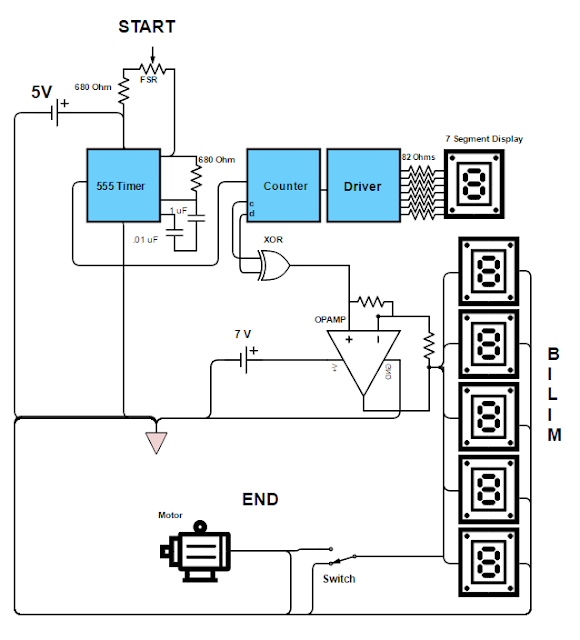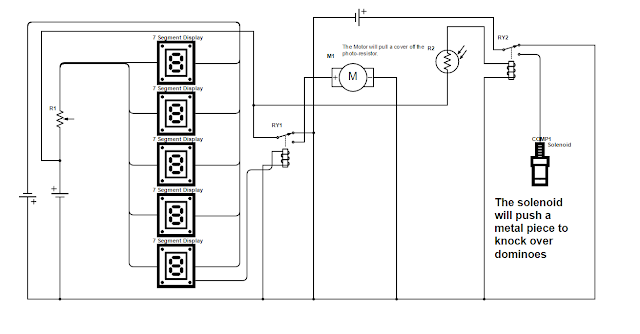NOT SHOCKING PEOPLE AFTER THEY'VE NOT SHOCKED THEMSELVES
Week 13 Rube Goldberg: Nicholas Miller
Updated Schematic of Rube Goldberg
Figure 1: Circuit Schematic
Explanation of Circuit:
So what till happen is a trail of dominoes knocked over by Abdhullah's RB will knock over a domino into a shoot which will then land on an FSR. this will allow the 555 timer to begin pulsing which will make the counter begin to send signal to the driver which will begin to count up from 0 on a 7 segment display. When the display reads 4, the XOR gate the counter is connected to will activate and send current to an opamp which will amplify the voltage to activate another set of 7 segment displays which will display B I L I M (the Turkish word for 'science').
While this is happening, dominoes will still be falling toward the switch which is being pressed down, until the dominoes in motion knock over the pressing mechanism which will allow voltage to reach the motor from the voltage going to the set of 7 segment displays.
POST MOTOR: The idea is that the motor will either knock over more dominoes or will push a ball towards the next circuit. (More discussion is needed ;D )
POST MOTOR: The idea is that the motor will either knock over more dominoes or will push a ball towards the next circuit. (More discussion is needed ;D )
More Circuit Images
Figure 2: Force Sensing Resistor Placement
Figure 3: FSR connection to 555 Timer--> Counter--->XOR
Figure 4: Connections of 555 timer, driver, counter, and 7 segment display
Figure 5: Showcasing connection between XOR gate and OP-AMP
Figure 6: Connections to 7 segment displays that read B I L I M (Science in Turkish)
Figure 7: Domino cradle to rest on switch
Figure 8: Motor Placement
Figure 9: Full Circuit and Mechanical w/out dominoes
Figure 10: Full Circuit and Mechanical with dominoes
Figure 11: Showcasing domino rested above its shoot to land of FSR
Figure 12: Image of staircase domino setup for delivering domino forces to circuit (and for the hellz of a cool looking shot... kinda)
















































